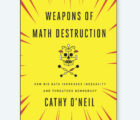An informal CAS survey of casualty actuaries showed that communication and business skills are among the top qualities that predictive modelers need to succeed in their careers.
Results from the CAS survey were revealed on March 11 at the final general session, “The Actuary in a Predictive Modeling World,” which was held during the 2015 CAS Ratemaking and Product Management seminar in Dallas. The survey responses clarified the importance of casualty actuaries in bringing predictive modeling to the insurance industry.
Led by Jessica Leong, FCAS, execution lead at Zurich Insurance North America, a panel of experts discussed the results. Panelists included Steven Armstrong, FCAS, chief pricing actuary for personal lines, mortgage services and crop at QBE North America; Alietia Caughron, Ph.D., a vice president at CNA; Sheri Scott, FCAS, a principal and consulting actuary at Milliman; and Kimberly Holmes, ACAS, a senior vice president at XL Group.
The first survey question asked respondents to name the desired characteristics of a top predictive modeler. The most popular answer was “good business knowledge,” followed closely by “understanding of statistics.” Other popular responses were “avid learner,” “communicating results,” “data expertise” and “good programmer.”
Panelists noted that the results demonstrate a need for quantitative experts like predictive modelers to understand both the business and the mathematical sides of their work. Communication skills are important as well.
A good actuary has many of the same skills, noted Armstrong.
“While attention to detail remains a critical modeling skill, predictive modelers can’t lose sight of the bigger context of the work they are doing. It’s important to see the big picture,” said Holmes.
Survey participants were also asked to identify top statistical concepts that predictive modelers should understand. Generalized linear modeling (GLM), a mathematical tool on which modern ratemaking depends, was the top answer.
Other common responses were:
- Goodness-of-fit — a statistical notion of how closely a model fits the data that underlie it.
- Decision trees — tools that model decisions and their possible consequences.
- Correlation and causation — insurers need to show how their rating variables correlate with losses, but it is also helpful to demonstrate to regulators and business partners how the variables cause riskiness.
- A knowledge of statistics — this includes probability distributions and statistical formulae that insurers commonly use in predictive analysis.
Armstrong noted that the CAS offers many professional education programs on predictive modeling and will soon increase its testing on GLMs and other statistical models. “This is a fundamental skill we need to have on the CAS exams,” he said.
Sheri Scott said that she always includes an actuary on a predictive modeling team, but ideally she includes both a subject-matter expert actuary and a technically strong modeler who may not be an actuary, such as a data scientist.
She said, “The actuary is going to understand the business and will ensure the data and findings are used in an insurance-appropriate manner, but the data scientist will challenge the norms and create innovations. Although actuaries could serve both roles, each team member should contribute and challenge each other. The mix of backgrounds enhances the team. If you’re an actuary leading a team of predictive modelers, you want to understand what they are doing. You have to understand the basics and what solutions are out there. You are a middle person between the business and the analysis.”
Finally, survey respondents identified the nonquantitative skills needed by actuaries, the top skill being communication. Other key nonquantitative skills were project management, networking, leadership, and business and industry knowledge.
Becoming a good communicator is not always easy, panelists agreed.
“You have to make a conscious effort at it,” said Holmes. “It didn’t matter how good I was at mathematics. If I couldn’t communicate my ideas, I couldn’t add any value to the business.”
To improve his communication style, Armstrong took improvisation classes in Chicago. “It’s a tremendous way to learn communication skills,” he said.
To close the session, panelists considered the state of actuaries in predictive modeling, both today and in the future.
There is limitless potential, says Caughron. “The future is a data-driven world that will reward those who bring to the table an understanding of data and turning data into useful information. There is huge opportunity for actuaries.”
James P. Lynch, FCAS, is chief actuary and director of research and information services for the Insurance Information Institute in New York.











